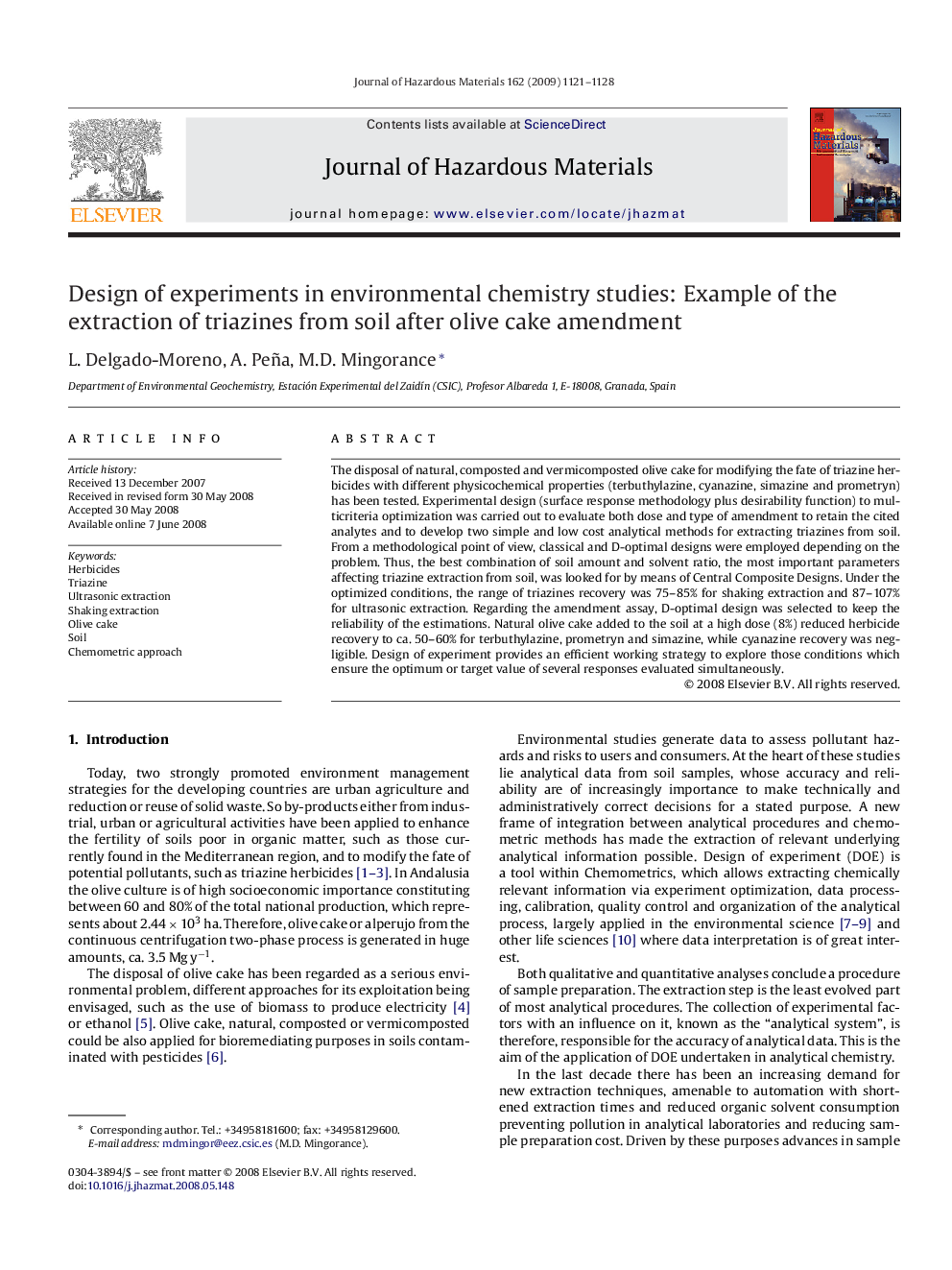| Article ID | Journal | Published Year | Pages | File Type |
|---|---|---|---|---|
| 582410 | Journal of Hazardous Materials | 2009 | 8 Pages |
Abstract
The disposal of natural, composted and vermicomposted olive cake for modifying the fate of triazine herbicides with different physicochemical properties (terbuthylazine, cyanazine, simazine and prometryn) has been tested. Experimental design (surface response methodology plus desirability function) to multicriteria optimization was carried out to evaluate both dose and type of amendment to retain the cited analytes and to develop two simple and low cost analytical methods for extracting triazines from soil. From a methodological point of view, classical and D-optimal designs were employed depending on the problem. Thus, the best combination of soil amount and solvent ratio, the most important parameters affecting triazine extraction from soil, was looked for by means of Central Composite Designs. Under the optimized conditions, the range of triazines recovery was 75-85% for shaking extraction and 87-107% for ultrasonic extraction. Regarding the amendment assay, D-optimal design was selected to keep the reliability of the estimations. Natural olive cake added to the soil at a high dose (8%) reduced herbicide recovery to ca. 50-60% for terbuthylazine, prometryn and simazine, while cyanazine recovery was negligible. Design of experiment provides an efficient working strategy to explore those conditions which ensure the optimum or target value of several responses evaluated simultaneously.
Related Topics
Physical Sciences and Engineering
Chemical Engineering
Chemical Health and Safety
Authors
L. Delgado-Moreno, A. Peña, M.D. Mingorance,
